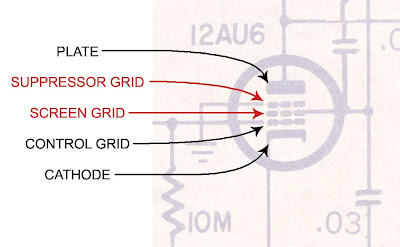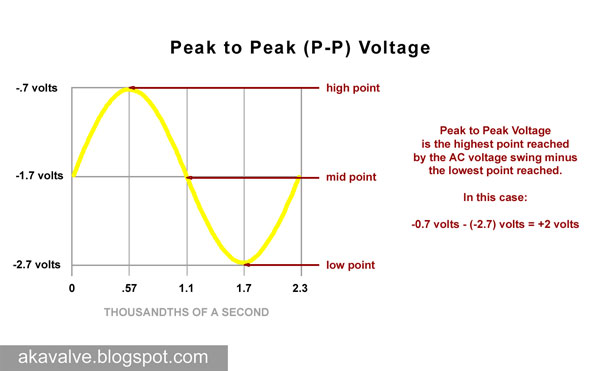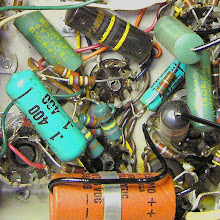Once in a while a repair comes in that's a real surprise. This Gregory tube practice amp is one of them. When it was fixed up it really sounded fantastic. It's not as aggressive as most small amps. The treble is tamed and the distortion is fairly smooth and laid back and the clean sound is very sweet even at very low volumes.
I was really sorry when I had to give this one back!
Since the result is so nice, I thought I'd spend some time going though some of the oddities of the circuit.
Here's the schematic:

There's a number of unusual things here.
The first is the input stage.
A run of the mill 12AX7 triode input would look
something like this:
The first is the input stage.
A run of the mill 12AX7 triode input would look
something like this:

But the 12AU7 in this Gregory has two more elements in the preamp tube.
Here's what it looks like in the schematic:
Here's what it looks like in the schematic:

The plate, cathode and control grid are elements found in a triode tube.
I've labeled in red the additional elements the additional elements found in a pentode tube:
I've labeled in red the additional elements the additional elements found in a pentode tube:

Since it has five elements instead of three, we call this tube a pentode. Pentodes are common as output power tubes. The EL34 is one. But pentode inputs on guitar amps are pretty rare birds (one example is the 6SJ7 in the early Fender Champs with the 5C1 circuit). The pentode input is certainly not sole contributor to the sound of the amp, but it makes me curious to try a 6SJ7 in the Champion 600.
I'll go through some more of the circuit in future posts (and hopefully get some pictures from the owner - I forgot to take some myself before I sent it back).
I'll go through some more of the circuit in future posts (and hopefully get some pictures from the owner - I forgot to take some myself before I sent it back).











